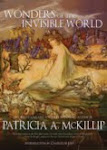I previously posted on "Theodore O'Connor", a pony who is representing the U.S. at the Beijing Olympics, and ponies who are used in combined driving.
Some breeders of sport horses also like to breed warmblood horse lines into their smaller counterparts to produce a mount for children who are not at the age to be able to manage a much larger horse. Some adults could fit into this category, including myself, especially when it pertains to riding warmblood horses.
European warmblood horses come in a variety of sizes, although the majority are large and larger: at 16.2 hh or 17.2 hh or even 18 hh, with the weight to go with it. For those not acquainted with measuring horses, a hand width of 4 inches makes up 1 hh; therefore 16.2 would be 16 x 4 plus 2 inches = 66 inches to the top of the horse's shoulders (withers). These are totally unsuitable for children to even consider riding, so the German breeders developed a sport pony which they hold in high regard.
A common breed of pony used to cross with warmbloods are the versatile Welsh, which come in four different sizes, set in sections: A, B, C and D. The Section D ponies are usually cobs being more of a sturdy, well built small horse size up to 15.2 hh.
From You Tube video three representatives of well presented sport ponies: a buckskin from Germany, Der Kleine Prints,
not embedded here,
and two from the United States Wedderlie Mardi Gras (an imported Welsh Pony stallion, Section B),
not embedded here,
and an approved American Sport Pony Registry stallion,
Hot Shot MRF who is a Welsh Hanoverian cross) below:
For those unable to view embedded see here.
J.D. Vance’s Road to Catholicism
2 hours ago













